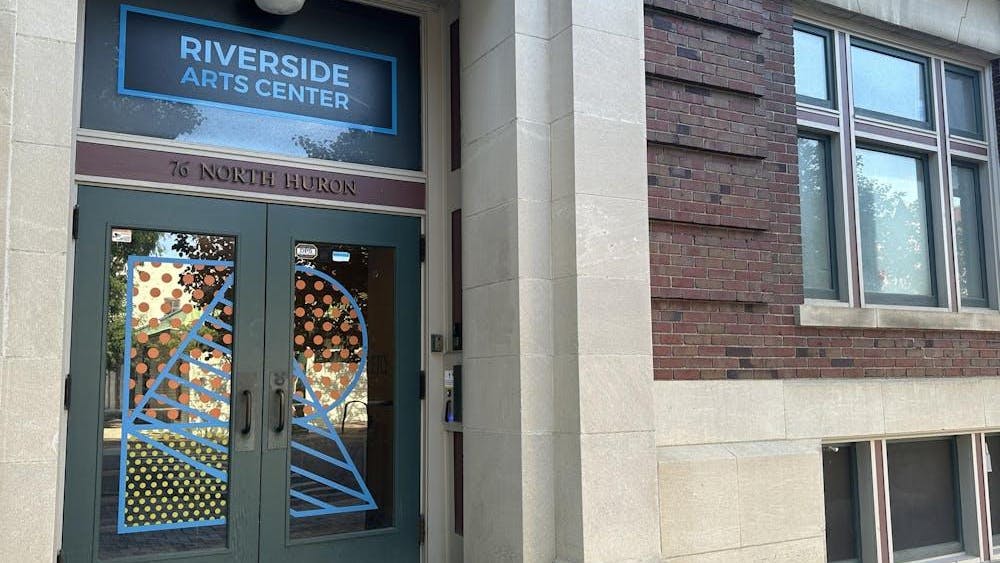With approximately 159 majors to choose from, students at Eastern Michigan University have an abundance of choices including subjects that vary from philosophy and religious studies to mechanical engineering according to the EMU catalog.
Of all these subjects, business degrees have recently stolen the spotlight of intrigue. The popularity of business diplomas has grown as much as 4 percent since 2003. Of the diplomas received by the graduates of 2010, 22 percent are business degrees, according to emich.edu’s institutional data.
“Majoring in business remains consistent because there is always a strong demand,” said Matthew Hammond, a data analyst for accreditation and learning assessment ant the EMU college of business. “That is something that won’t change in the future. A background in business can relate to any industry. A student interested in photography with experience in business can learn to open up their own studio.”
Potentially opening up one’s own studio is only one of the appeals of EMU’s College of Business.
“Our business program at EMU has a great partnership with business administrations,” Hammond said. “This provides good entrepreneurship opportunities for students.”
Health professions and related sciences is a category of majors that also recently took off, rising from 5 percent of student diplomas in 2003 to 9 percent in 2010, according to the institutional data of emich.edu. Nursing, in particular, appeals to students with a passion for the medical field.
“My mother is a nurse,” said Kerry Gould, a junior in EMU’s nursing program.
“She worked in many different programs, so I was exposed to all the different types of work for nurses. She would bring home mannequins that I would play with. As I grew older, I began to realize how much I liked helping people. I liked community service and I liked the medical field. Nursing is the perfect combination of helping people and the medical field.”
While some subjects, such as business and health professions including related sciences, have thrived in recent years, others suffer. Education majors have been on the decline. Since 2003, diplomas awarded for education have dropped 10 percent when compared to other percentages of degrees received by graduates, according to the institutional data.
Dr. Donald Bennion, head of EMU’s Department of Teacher Education, believes the number of education degrees has gone down due to bad press aboud teachers and schools.
The number of individuals within the Department of Teacher Education has taken a drop that parallels the decline in education degrees. Once at 50 members, 41 remain with the estimated loss of three more members by the end of the year.
However, the department isn’t going down without a fight. Bennion reportt major efforts are being made to place students in states with a shortages of teachers.
In addition to guiding students to the right place to build their career, the Department of Teacher Education also helps prospective education majors from the very beginning. Bennion says Recruitment takes place at many community colleges, where an increasing amount of students are beginning their college careers in order to save money.
EMU sends two teams to Michigan community colleges and four Ohio community colleges to alert students of the benefits of studying education at EMU, which includes programs rated “exemplary” by the State of Michigan.
Despite the decrease in diplomas, the attitude in the Department of Teacher Education remains positive.
“The teachers being turned out today are the best ones yet,”Bennion said.
Dr. Mary Brake, an EMU professor of mechanical engineering, also has a reason to be pleased. The mechanical engineering technology (MET) program, only about a decade old, has been growing in the number of graduates from about six in the year 2007 through 2008 and rising to about 12 in 2010 through to
2011.
Brake said enrollment in the department used to vary, until the program began to see more non-traditional students, some with strict job hours to abide by.
In response, the program added late- afternoon and evening classes, which stimulated the enrollment and, later on, the number of graduates.
As the number of MET graduates increases, strategically, so do job openings in the field. As Brake points out, many doors open with the plethora of lay-offs and early retirements the engineering world has been experiencing since the fall of the economy.






